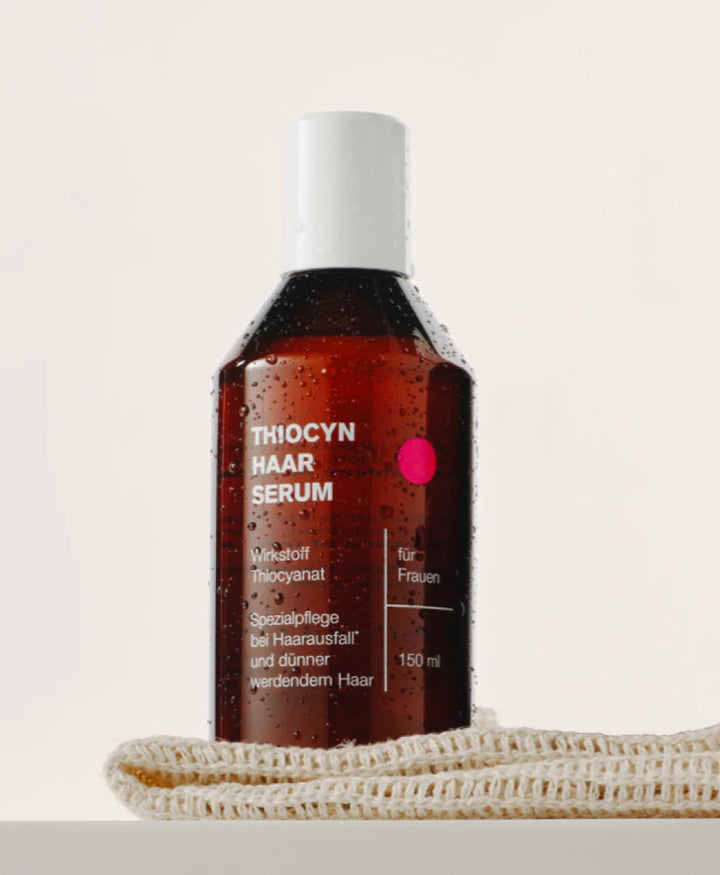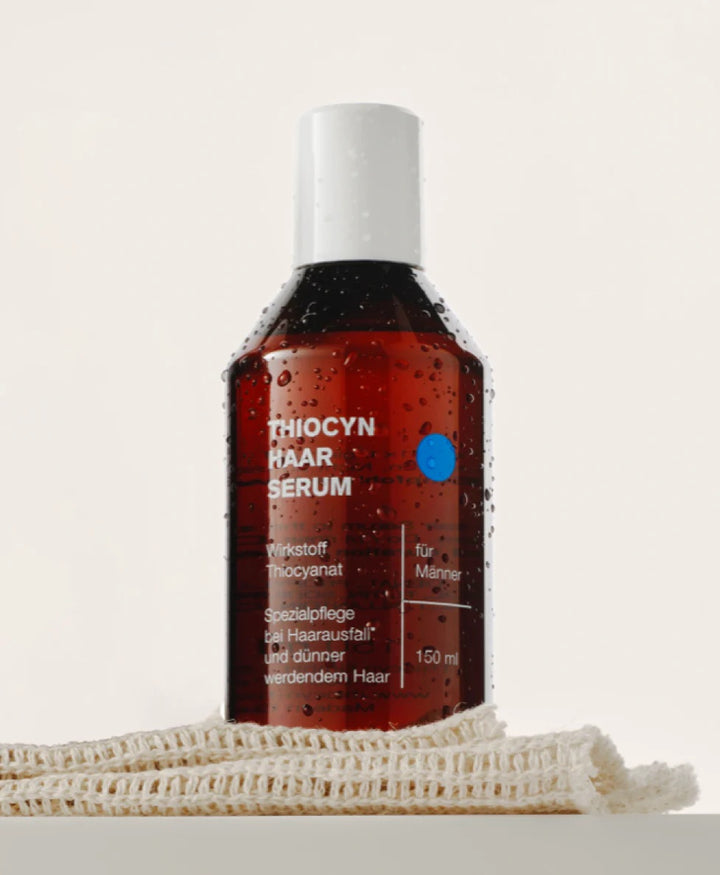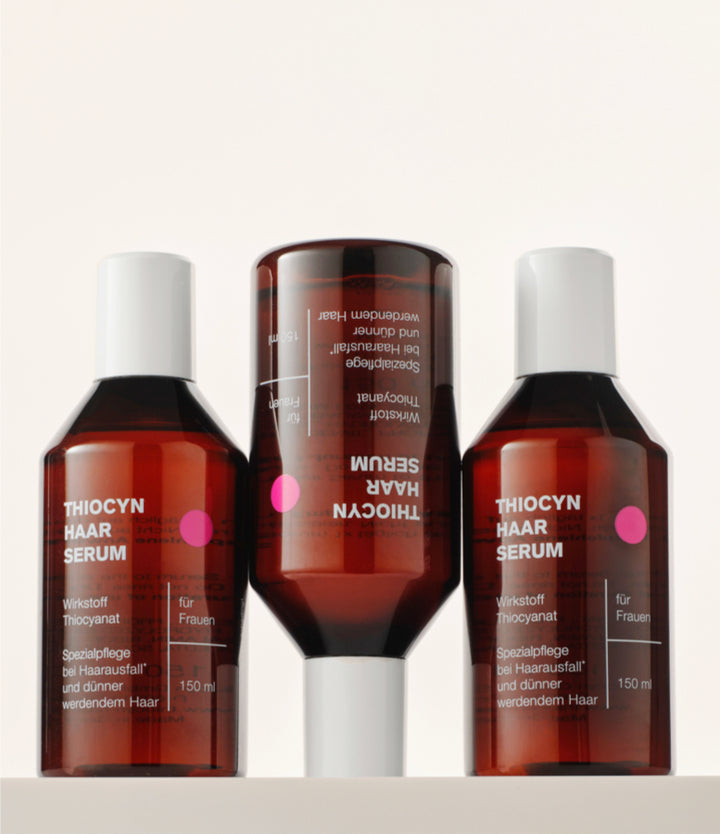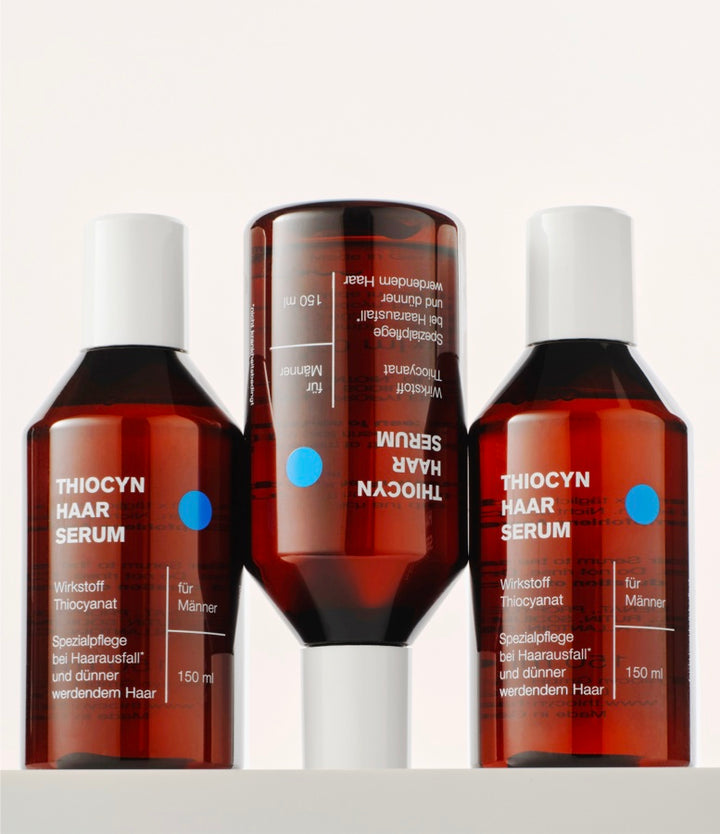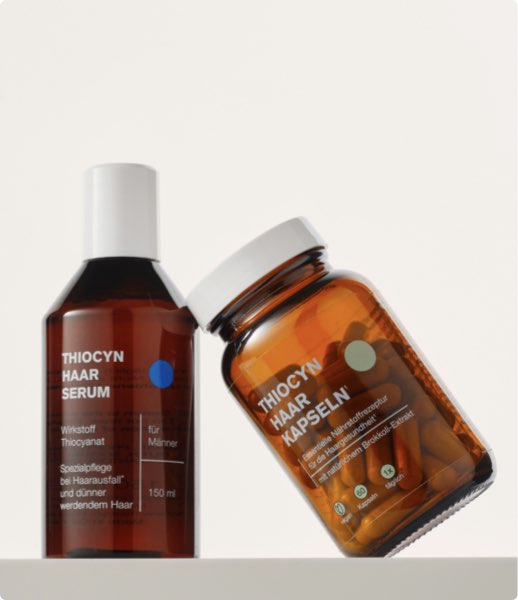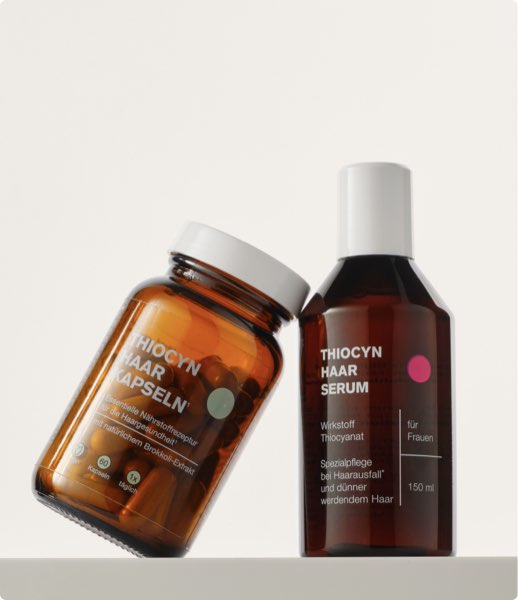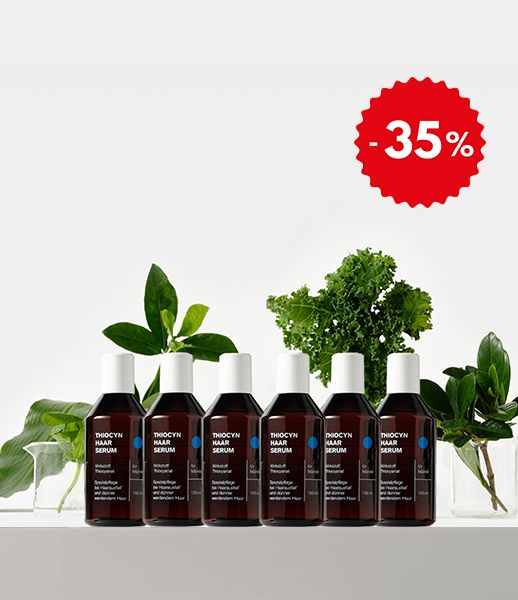| 04. July 2023
Oily hair
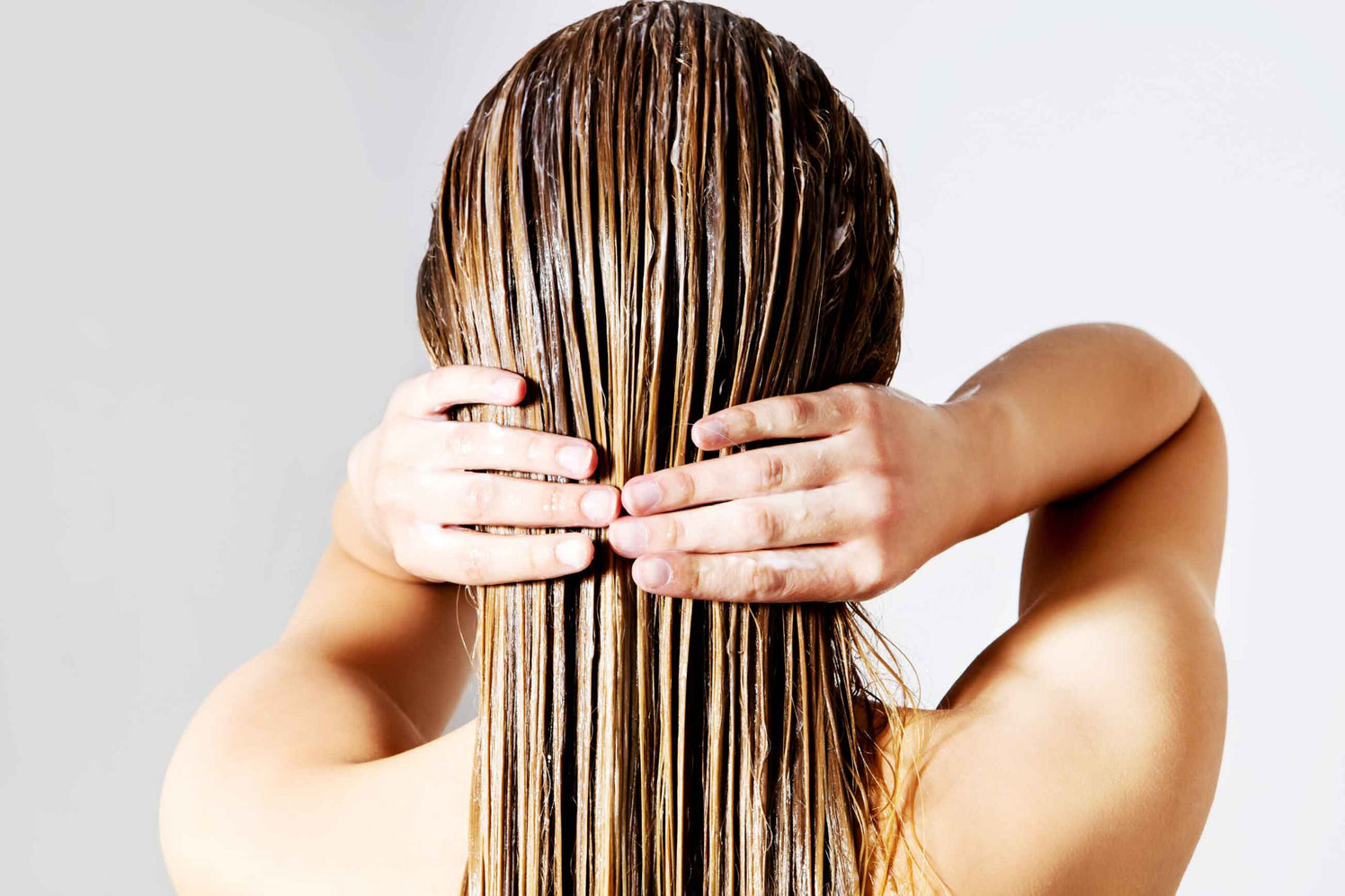
- Estrogens are female hormones that influence a woman's internal processes and, in addition to the menstrual cycle and other processes, also contribute to a healthy hair cycle.
- Estrogen deficiency leads to increased hair loss, among other side effects.
- The origin of estrogen deficiency can be the falling estrogen levels during menopause as well as after pregnancy.
- The solution? Hormone therapy in consultation with your doctor or the use of Thiocyn hair serum.
Many people's hair becomes greasy again shortly after washing. The reason for this is the persistently excessive production of sebum (Latin: sebum) by the sebaceous glands in the scalp. Not only adolescents during puberty experience greasy hair quickly, but many adults do too, which is usually perceived as a cosmetic defect.
The secretion of sebum is a natural process. Sebum makes our hair and scalp soft, and water beads off. Sebum also creates an acidic skin environment and strengthens the skin's protective barrier to prevent irritants from penetrating. Every person produces approximately one to two grams of sebum daily.
CAUSES OF OILY HAIR
Each hair is connected to a sebaceous gland (Latin: glandula sebacea), located in the upper part of the dermis. The secretion is transported from a sac along the hair follicle to the surface of the skin (holocrine secretion). Excessive activity or production of lipids (fats) by the sebaceous glands in the scalp can have various causes:
- Genetic predisposition to increased sebum production
- High number of sebaceous glands
- Hormonal fluctuations
- Environmental influences
- Taking medication
- Poor diet/increased alcohol consumption
- Excessive release of stress hormones (e.g. adrenaline)
AESTHETICS
Excessive sebum on the scalp quickly makes hair look unkempt and sticky. Regulating this secretion is difficult in this particularly common hereditary predisposition. Very fine hair, in particular, appears greasy more quickly than thicker hair. However, vigorous and frequent brushing should be reduced to avoid unnecessarily distributing the sebum through the hair.
Wearing a hat conceals the problem, but it can't stop the cause. The hair is permanently pushed closer to the oily scalp, making it appear greasy even faster. Voluminous, styled hairstyles are therefore recommended. Heavy sweating during exercise or in high temperatures also exacerbates the problem of oily hair.
Tips for oily hair
- Washing your hair
- Healthy eating
- Reducing stress
- noreiz skin-soothing care shampoo
- Thiocyn Hair Serum
ARE HORMONES RESPONSIBLE FOR OILY HAIR?
Male sex hormones (androgens), especially dihydrotestosterone , stimulate the sebaceous glands, while female sex hormones (estrogens) have the opposite effect on secretion production. This is why men tend to have oily scalps, while women tend to have dry scalps.
Hormonal imbalances during puberty, pregnancy, or menopause can contribute to the appearance of oily hair in women. A blood test or urine test at your doctor's office can provide information to determine whether the increased sebum production is related to hormone levels.
CARE FOR OILY HAIR
Oily hair and dandruff are often the result of an unbalanced scalp. Shampoos with overly strong surfactants can further boost sebum production after washing. Hair becomes oily more quickly because the sebaceous glands are trying to repair the skin's protective barrier.
A shampoo for oily hair should be particularly gentle on the scalp and have a slightly degreasing effect. When washing your hair, it's best to use lukewarm water, avoid drying your hair with hot air from a hairdryer, and avoid overstimulating the sebaceous glands, for example, by rubbing your hair vigorously.
READ BY 23,000 PEOPLE
Join 23,000 others and find out how to improve your hair health with great offers and discounts as well as helpful advice
